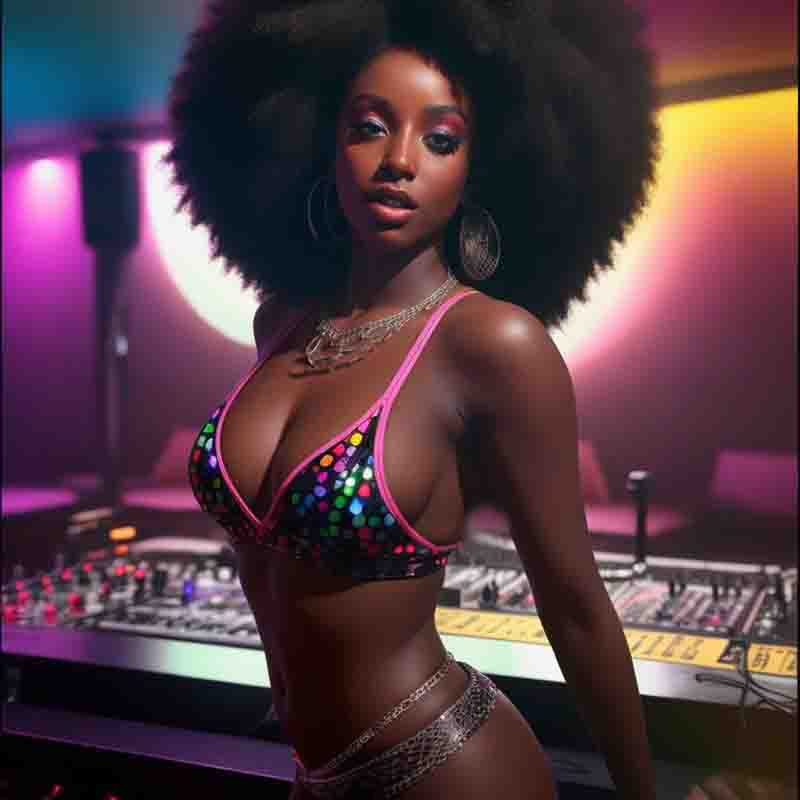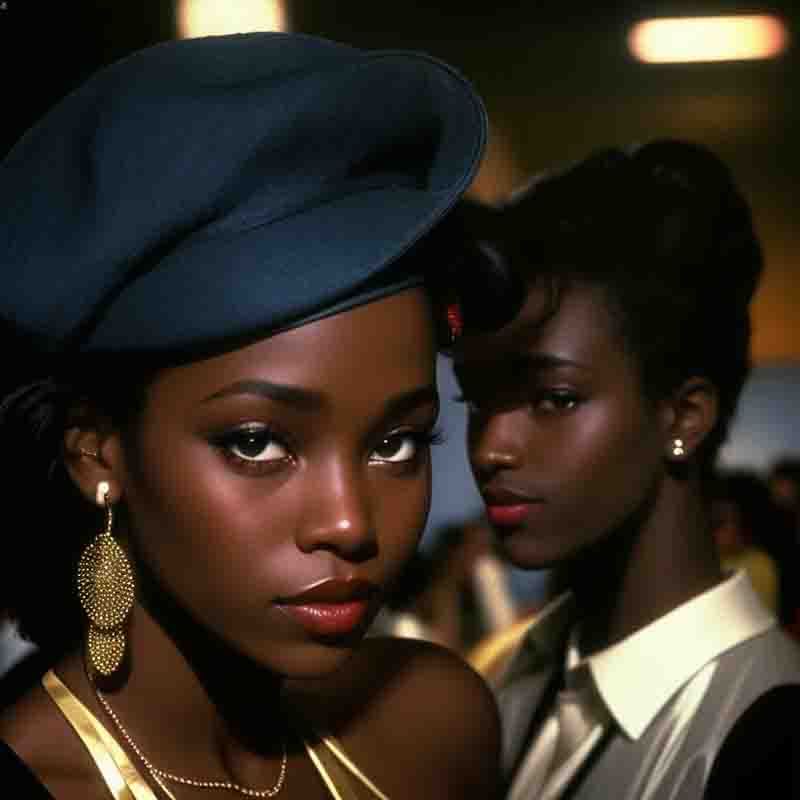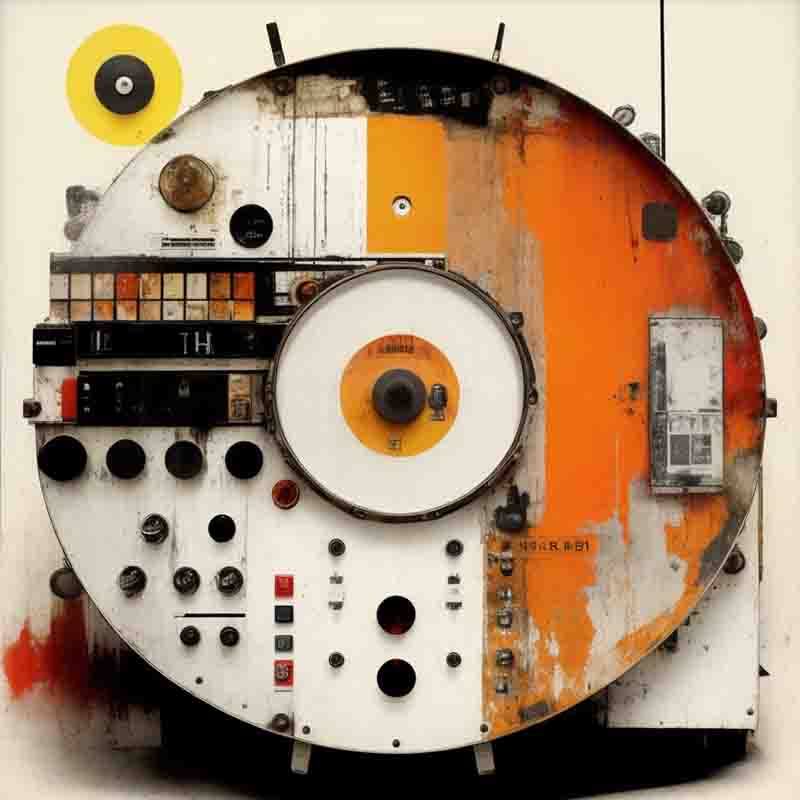The Story of Chicago House Music
House music is defined by its relentless four-to-the-floor beat, soulful melodies, and an ethos of inclusivity. Originating in the underground clubs of Chicago in the early 1980s, it is a genre born of diversity. House became the soundtrack of equality, bringing fun, funk, and unity to the dance floors of the Warehouse and around the world.

House Music has been at the forefront of innovation in music production and DJ performance. In its early days, House producers and DJs experimented with drum machines, synthesizers, and samplers to create the signature electronic sound that defines the genre.
Deep House with Guitar Riffs
Likewolf's unmistakable electro-blues combines pulsating house beats, guitars and haunting voices to deliver an intoxicating club experience.
✅ Subscribe and become a channel member:
In the dimly lit warehouses and hidden clubs of Chicago and New York City in the early 1980s, a musical revolution was taking place.
It was a revolution that would change the way we perceive and experience music, one that would eventually sweep the globe and leave an indelible mark on the world of electronic dance music (EDM).
The triumph of house music spread to Berlin and the Mediterranean party island of Ibiza from where dance music flourished and once again spread across the world.
The Birth of House Music
House Music emerged in the early 1980s as a response to the changing cultural landscape of urban America.
It was a time when disco music had peaked and was on the decline, and many dance music enthusiasts sought a new sound.
House Music's roots can be traced to African American, Latino, and LGBTQ communities in Chicago and New York City, who were pioneering the genre in underground clubs and parties.
The name of this musical genre called, "House Music", originates from a shortened version of "The Warehouse," as clubgoers would request tracks they heard at "the House", a club in Chicago where DJ Frankie Knuckles played an instrumental role in the development of the house sound.
DJ Jesse Saunders, released "On and On" in 1984 on his very own newly formed label Jes Say records. The maxi single with the catalogue number JS999 is regarded by many as being the first recorded house release.
Featuring a thumping bassline, synthesizer melodies and soulful vocals, this infectious maxi single became a blueprint for the future of house music productions.
Driven by innovative DJs and producers, House Music would go on to shape the course of music history and inspire generations of artists and music lovers worldwide.
The Warehouse and other clubs like The Paradise Garage in NYC became the epicenters of this emerging musical movement.
House Music's journey from its underground origins to global domination is a testament to its enduring appeal and cultural significance. It's a genre that transcends borders, languages, and generations, uniting people on the dance floor through its infectious rhythms and timeless melodies.
The Disco Backdrop

House Music culture is more than just a collection of beats and melodies; it's a celebration of humanity's shared desire for connection, expression, and joy.
To understand the birth of House Music, it's essential to first consider the musical landscape of the late 1970s.
Disco music had taken the world by storm, with its danceable beats, catchy melodies, and extravagant nightlife culture.
Clubs like Studio 54 in New York City were at the epicenter of this disco revolution, where the glitterati of the era came to dance and celebrate. However, as disco reached its peak, it also faced a backlash.
Critics and some segments of the public grew weary of the commercialization and excess associated with disco culture. It was against this backdrop that House Music began to take shape.
The Warehouse: Birthplace of House Music
In 1977, a club called the Warehouse opened its doors in Chicago. This unassuming venue, managed by Robert Williams, would become ground zero for the emerging House Music movement.
The Warehouse was known for its diverse crowd, open-minded atmosphere, and a sound system that could pump out deep, pounding bass like no other.
The club's resident DJ, Frankie Knuckles, is often hailed as one of the founding fathers of House Music.
Knuckles was a master of blending disco, soul, funk, and European electronic tracks into seamless sets that captivated the Warehouse's diverse patrons.
His ability to create a sense of unity and euphoria on the dance floor is legendary.
The Social and Cultural Context of House Music
House Music's emergence was not only a musical phenomenon but also deeply connected to the social and cultural context of the time.
The early 1980s saw a backdrop of socio-economic challenges, including urban decay and a growing sense of disenfranchisement in some communities.
House Music offered an escape from these challenges. It was a sanctuary for individuals of diverse backgrounds, races, and sexual orientations to come together on the dance floor.
House music became an inclusive energy that overcame barriers and promoted a sense of belonging.
House Music's Underground Legacy

House music, rooted in the underground clubs of Chicago, has defied borders and cultures to become a global movement. Its captivating beats, upbeat messages, and universal appeal have made it a prevailing player in the music industry across the globe.
One of the defining features of House Music's origins is its grassroots and underground nature.
The early House tracks were produced on modest equipment, often in home studios, and distributed through small independent labels.
This DIY ethos allowed for experimentation and creativity, free from the constraints of mainstream commercialization.
As House Music began to gain popularity, it remained closely associated with the underground club scene.
The genre's core values of inclusivity, acceptance, and the celebration of diversity continued to flourish in these spaces.
In summary, the origins of House Music can be traced back to the creative melting pot of Chicago's underground clubs in the late 1970s and early 1980s.
Fueled by visionary DJs, innovative producers, and a diverse and open-minded audience, House Music emerged as a revolutionary genre that challenged the conventions of the music industry.
Its story is one of resilience, unity, and a profound cultural impact that continues to reverberate across the globe.
Key Elements of House Music
House Music, known for its infectious and rhythmic beats, is a genre defined by several key elements that combine to create its unmistakable sound.
These elements are the building blocks of irresistible groove of House Music.
Synthesizers and Drum Machines

House Music's journey into the digital age has expanded its horizons and redefined how it's produced, distributed, and experienced. The genre has embraced technology while staying true to its core values of unity, inclusivity, and self-expression.
House Music relies heavily on electronic instrumentation, with synthesizers and drum machines playing a pivotal role in shaping its sound.
These electronic tools allow producers to craft intricate sonic landscapes, combining synthetic tones and rhythms to create unique and captivating compositions.
Synthesizers are used to generate a wide range of sounds, from pulsating basslines to soaring melodies.
They add layers of texture and emotion to House tracks, giving each song its distinct personality.
Meanwhile, drum machines are responsible for creating the punchy and rhythmic drum patterns that are a hallmark of House Music.
Vocal and Instrumental Samples: Soulful Expressions
House Music often incorporates vocal and instrumental samples from a variety of sources. These samples can be snippets of soulful singing, spoken word, or instrumental riffs.
Samples serve as a means of communication and expression within the music, conveying messages of love, unity, and empowerment.
Sampling is an art form in House Music, where producers carefully select and manipulate these sonic snippets to fit seamlessly into their tracks.
These samples contribute to the emotional depth of House Music, allowing artists to tell stories and connect with their audience on a profound level.
Repetition and Build-Ups: The Journey Within a Track
House tracks are known for their repetitive structures, where certain elements, such as drum patterns and basslines, loop consistently throughout the song.
This repetition is not monotonous; rather, it creates a hypnotic and trance-inducing effect that keeps listeners engaged and dancing.
One of the defining characteristics of House Music is the gradual build-up within tracks.
Producers strategically introduce new elements, increase the intensity of the beat, and create tension, all leading to a climactic moment known as the "drop."
This build-up and release cycle is what generates the euphoric energy and excitement on the dance floor.
Diversity of Styles and Subgenres: House Music a Genre of Many Flavors
While these key elements are common to House Music as a whole, the genre is incredibly diverse, with numerous subgenres that offer different flavors and moods.
Whether it's the deep and soulful vibes of Deep House, the energetic and techy sound of Tech House, or the epic and progressive feel of Progressive House, House Music caters to a wide range of tastes and settings.
Each subgenre retains the fundamental elements of House Music but adds its unique twist, creating a rich tapestry of sonic experiences for listeners and dancers alike.
This diversity ensures that House Music remains a genre that constantly evolves and adapts to new influences and trends.
House Music Subgenres

House music, a genre that emerged in the vibrant dance clubs of Chicago in the 1980s, has become a global cultural phenomenon that breaks boundaries and crosses musical borders.
As House Music gained popularity, it began to evolve and diversify into numerous subgenres, each with its unique characteristics, sonic elements and cultural influences.
From the soulful vibes of Deep House to the energetic rhythms of Tech House, here are ome of the most notable subgenres:
-
Deep House: Deep House is known for its laid-back and soulful vibe. It often incorporates jazzy chords, smooth basslines, and evocative vocals. Its beats often hover around 120-125 BPM (beats per minute), providing a slower, more relaxed groove compared to other House subgenres. Key elements include smooth basslines, jazzy chords, and soulful vocals. Artists like Larry Heard and Kerri Chandler have been instrumental in shaping this subgenre.
-
Progressive House: Progressive House is characterized by its gradual build-ups and epic drops. It's a genre that takes listeners on a journey, building tension before releasing it with a euphoric climax. DJs like Sasha and John Digweed played a significant role in popularizing this subgenre. Tech House is all about energy and movement. It's the sound of underground clubs, warehouses, and open-air festivals.
-
Tech House: Tech House combines the rhythmic elements of techno with the groove and accessibility of house music. It often features intricate percussion, playful melodies, and a focus on the dance floor. Artists like Carl Cox and Green Velvet have made significant contributions to this style. Tech House is a fusion of House and Techno, blending the rhythmic precision of Techno with the groove and soul of House.
-
Acid House: Acid House is instantly recognizable for its use of the Roland TB-303 synthesizer, which produces the iconic "acid" sound. This subgenre has a psychedelic and hypnotic quality, with squelchy, resonant basslines. It played a pivotal role in the early rave scene. The 303 basslines create an otherworldly and hypnotic atmosphere on the dance floor. It's a genre that invites dancers to let loose and embrace the strange and wonderful sounds of the 303.
-
Minimal House: Minimal House takes a less-is-more approach, focusing on stripped-down beats, subtle details, and a sense of minimalism. It's characterized by a reductionist aesthetic, where every sound and silence matter. Minimal House tracks often have a hypnotic and repetitive quality. Minimal House is about the art of restraint and the appreciation of subtlety. It invites listeners to tune into the smallest sonic nuances and groove to the intricate rhythms.
-
Vocal House: Features soulful and often gospel-inspired vocals.
This diversity within the genre allowed it to appeal to a broad audience, with each subgenre catering to different tastes and moods.
The global spread of House Music in the late 1980s and early 1990s was fueled by a combination of factors, including the influence of American DJs, the rise of electronic music festivals, and the emergence of the "Second Summer of Love" in the UK.
This period saw the genre transcend its underground roots and reach mainstream audiences.
In Europe, countries like the UK, Germany, and the Netherlands embraced House Music, giving rise to subgenres like UK Garage, Eurodance, and the Dutch Hardcore scene.
Iconic events like the Love Parade in Berlin and Creamfields in the UK became synonymous with the electronic music movement.
The Magic of House Music
The key elements of House Music, from its steady four-to-the-floor beat to its use of synthesizers, samples, repetition, and build-ups, all come together to create the magic that defines the genre.
It's a genre that transcends borders and languages, uniting people through the universal language of rhythm and dance.
House Music is a way of life, a source of joy and expression for millions around the world.
Its enduring appeal lies in its ability to capture the essence of human emotion and translate it into music that moves both the body and the soul.
House Music Timeline
The history of House Music, from its origins to the present day
-
Late 1970s: The disco movement gains popularity in the United States, with dance clubs becoming central to urban nightlife.
-
1977: The release of Donna Summer's "I Feel Love" showcases electronic music's potential and influences the House Music genre.
-
Early 1980s: In Chicago, DJs like Frankie Knuckles and Ron Hardy experiment with mixing disco and electronic sounds at clubs like The Warehouse and Music Box.
-
1983: The term "House Music" is attributed to DJ Jesse Saunders, who releases "On and On," considered one of the first House Music tracks.
-
Mid-1980s: House Music spreads to New York City, with clubs like The Paradise Garage becoming iconic venues.
-
1986: Marshall Jefferson's "Move Your Body" and Farley Jackmaster Funk's "Love Can't Turn Around" help popularize House Music.
-
Late 1980s: House Music evolves into subgenres like Acid House, characterized by the use of the Roland TB-303 synthesizer.
-
Early 1990s: House Music gains international prominence, with artists like Inner City ("Good Life") and Technotronic ("Pump Up the Jam") achieving mainstream success.
-
1991: The first electronic dance music festival, "The Love Parade," takes place in Berlin, showcasing House Music's global appeal.
-
Mid-1990s: Progressive House becomes popular with tracks like Underworld's "Born Slippy."
-
Late 1990s: The rise of trance and techno influences House Music.
-
Early 2000s: The digital age transforms House Music production, making it more accessible to aspiring artists.
-
2000: Daft Punk's "One More Time" blends House Music with pop elements, reaching a broad audience.
-
Mid-2000s: Electro House gains popularity with artists like David Guetta and Deadmau5.
-
Early 2010s: Electronic Dance Music (EDM), including House Music, becomes a global phenomenon, with festivals like Tomorrowland attracting massive crowds.
-
2013: Daft Punk's "Random Access Memories" wins Album of the Year at the Grammy Awards, solidifying House Music's influence on pop culture.
-
2014: Disclosure's "Latch" featuring Sam Smith becomes a commercial success, blending deep and garage house with pop sensibilities.
-
Late 2010s: House Music continues to evolve, with artists like Fisher ("Losing It") and CamelPhat ("Cola") achieving mainstream success.
-
Present Day: House Music remains a dynamic and influential genre, with artists constantly pushing boundaries and subgenres evolving.
Throughout its history, House Music has undergone various transformations, from its underground origins in Chicago to its global reach and influence on mainstream music.
It continues to adapt and thrive, remaining a cornerstone of electronic dance music and nightlife culture worldwide.
From Disco to Techno: The Musical Palette of House
House Music's evolution has been significantly shaped by its musical predecessors and neighboring genres. Here are some of the key influences
-
Disco: Disco music, with its danceable beats and soulful vocals, provided an essential foundation for House Music. Early House DJs often incorporated disco tracks into their sets, helping to define the genre's dancefloor-friendly sound.
-
Funk and Soul: Funk and soul elements, such as groovy basslines and emotive vocals, found their way into House Music, adding depth and soulfulness to the genre.
-
Techno: Techno, another electronic genre that emerged in Detroit, shared some common elements with House Music. The two genres influenced each other, with Techno's emphasis on electronic soundscapes and minimalism contributing to House's sonic palette.
-
R&B and Hip-Hop: House Music has often drawn inspiration from R&B and hip-hop, incorporating rap verses and R&B vocals into its tracks. This fusion has given rise to subgenres like Hip-House.
-
Soulful House: A subgenre within House Music, Soulful House, places a strong emphasis on soul and gospel influences, resulting in tracks with deeply emotive vocals and melodies.
House Music is not just a genre of music; it's a testament to the symbiotic relationship between music, culture, and technology.
House Music has been shaped by technological advancements, and in turn, it has pushed the boundaries of what is possible in music production and DJ performance.
Whether you're a seasoned House Music enthusiast or a newcomer to its infectious beats, one thing remains clear: the journey of House Music is far from over, and its legacy will continue to resonate with generations to come.
House Music: FAQ
Are you curious about music, art, technology, fashion, lifestyle, and beer?
If so, then you need to subscribe to the free Likewolf newsletter.
100% privacy. When you sign up, we'll keep you posted.
Party mood on Ibiza
Experience a party on the island of Ibiza
